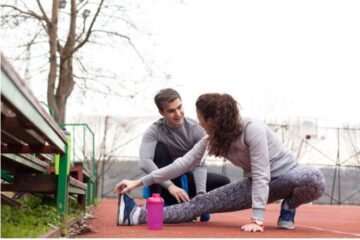Erging, short for ergometer rowing, is the practice of using an indoor rowing machine—commonly known as an erg—to simulate the motion and resistance of rowing on water. This innovative exercise form has gained immense popularity among fitness enthusiasts and athletes due to its ability to deliver a comprehensive workout. Not only does it build cardiovascular endurance, but it also engages multiple muscle groups simultaneously, making it a powerhouse for fitness.
Indoor rowing machines were developed to allow rowers to train regardless of weather conditions or access to water bodies. The first ergometers emerged in the 1960s and have since evolved dramatically. Brands like Concept2 and newer entrants like Hydrow have revolutionized this space with advanced technology, making erging a staple in fitness centers globally. Today’s machines feature performance tracking metrics, offering users real-time feedback to enhance their workouts.
Benefits of Erging
Full-Body Workout and Muscle Engagement
Erging is celebrated for its full-body workout benefits. When you row, you activate a multitude of muscle groups—your legs drive the motion, your core stabilizes your body, and your arms and back pull the handle. This engagement helps in building strength and muscular balance, making it an excellent option for anyone looking to improve their overall fitness.
Cardiovascular Fitness: How Erging Improves Heart Health
As an aerobic exercise, erging is particularly effective at enhancing cardiovascular fitness. It elevates your heart rate, improving heart health and overall stamina. Regular sessions can significantly boost your aerobic capacity, making daily activities feel easier over time. According to studies, rowing improves lung function, contributing to better oxygen delivery and utilization throughout your body.
Low-Impact Nature: Joint-Friendly Exercise
One of the standout features of erging is its low-impact nature. Unlike running or other high-impact cardio workouts, rowing minimizes stress on your joints. The smooth, gliding motion reduces the risk of injury, making it suitable for individuals of all fitness levels and ages. This aspect is especially beneficial for those recovering from injuries or those with joint concerns.
Calorie Burning and Weight Management
Erging is also a fantastic calorie-burning exercise. Depending on your weight and workout intensity, you can burn hundreds of calories per session. This high level of calorie expenditure makes it an excellent choice for weight management and fat loss. Incorporating erging into your routine can accelerate your fitness goals while keeping the workout engaging.
Understanding the Ergometer
Types of Ergometer Machines
There are several types of rowing machines available on the market today. The most popular include air resistance, water resistance, and magnetic resistance machines. Each type offers unique benefits and sensations, allowing users to choose based on their preferences. For instance, Concept2 ergs are well-known for their reliability and performance, while Hydrow machines provide an immersive experience with live and on-demand rowing classes.
How an Ergometer Works
An ergometer functions by creating resistance that mimics rowing on water. Most machines allow you to adjust the resistance level, providing options for users at different fitness levels. By pulling the handle, you create tension, which simulates the drag experienced when rowing. This feature not only makes workouts customizable but also helps users track their progress accurately.
Performance Metrics: What to Track (Calories, Distance, Time)
Modern ergometers come equipped with digital monitors that display essential performance metrics. Users can track their stroke rate, distance rowed, time elapsed, and calories burned in real time. This data is invaluable for setting goals and measuring progress, helping to keep you motivated and on track.
Erging Techniques and Form
Proper Technique: Catch, Drive, Finish, and Recovery
To maximize the benefits of erging, proper technique is essential. The rowing stroke consists of four main phases: Catch, where your knees are bent, and arms are extended; Drive, where you push through your legs and pull the handle towards your chest; Finish, where you lean back slightly and pull the handle in; and Recovery, where you extend your arms and slide back into the catch position. Mastering these phases ensures a smooth and effective workout.
Common Mistakes and How to Avoid Them
Many beginners struggle with maintaining proper form, which can lead to inefficiency and injury. Common mistakes include hunching the back, overextending the arms, and rushing through the recovery phase. To avoid these pitfalls, focus on maintaining a strong core, keeping a straight back, and taking your time during each phase of the stroke.
Tips for Improving Technique and Efficiency
To enhance your rowing efficiency, consider incorporating drills into your training. Focus on short bursts of intense effort followed by periods of rest to build power and improve technique. Additionally, working with a coach or experienced rower can provide personalized feedback and accelerate your learning curve.
Workout Routines for Erging
Beginner Workouts: Getting Started with Erging
For beginners, starting with shorter sessions is key. Aim for 10-15 minutes at a steady pace, focusing on mastering form before increasing intensity or duration. Gradually build up to 20-30 minutes as your comfort and endurance improve.
Intermediate and Advanced Routines
As you progress, consider integrating interval training into your workouts. Alternating between periods of high intensity and moderate recovery can significantly boost your fitness level. For instance, try a workout where you row hard for one minute, then recover for two minutes, repeating this cycle several times.
Incorporating HIIT and Interval Training
High-Intensity Interval Training (HIIT) is an effective way to maximize calorie burn and improve cardiovascular fitness through erging. Incorporate 30 seconds of all-out rowing followed by 30 seconds of rest into your sessions. This method not only enhances your metabolic rate but also engages different muscle fibers, promoting muscle growth.
Sample Weekly Erg Workout Plans
Creating a structured workout plan can keep you motivated and ensure well-rounded training. Here’s a sample weekly schedule:
Monday: 20 minutes steady state rowing
- Tuesday: HIIT workout (10 rounds of 30 seconds on, 30 seconds off)
- Wednesday: Rest or light cross-training
- Thursday: 30 minutes of mixed intervals
- Friday: Technique-focused session (short bursts emphasizing form)
- Saturday: Long steady-state row (40 minutes)
- Sunday: Rest or yoga/stretching for recovery
Erging for Different Fitness Levels
Adapting Erging for Beginners
For those new to erging, it’s important to listen to your body and progress at your own pace. Use shorter intervals and focus on maintaining proper form to build confidence and prevent burnout. Remember, consistency is key to building endurance and strength.
Challenges for Experienced Rowers
Experienced rowers may face the challenge of maintaining motivation and intensity during indoor workouts. To combat this, setting specific goals—whether it’s improving your 2k time or increasing stroke power—can provide a clear target. Engaging with community events or online challenges can also reignite your passion for erging.
Erging for Rehabilitation and Injury Prevention
Erging is often recommended for rehabilitation due to its low-impact nature. It allows individuals recovering from injuries to maintain fitness without the stress that other forms of exercise may impose. Always consult with a healthcare provider or physical therapist before starting a new workout routine post-injury.
Equipment and Setup
Choosing the Right Ergometer: Features to Consider
When selecting an ergometer, consider factors such as resistance type, adjustability, and additional features like performance tracking. The Concept2 rower is a popular choice for its durability and ease of use, while Hydrow offers a more modern, tech-savvy approach with interactive workouts.
Additional Accessories for Enhanced Performance
Enhancing your erging experience can be achieved with accessories such as padded seats, proper footwear, and performance monitors. These additions can improve comfort, enhance your workout quality, and help you track your progress more effectively.
Setting Up Your Ergometer at Home
If you choose to set up an erg at home, ensure you have ample space to accommodate the machine’s movement. Position it in an area with good ventilation and consider investing in a mat to protect your flooring. Regular maintenance is also key to ensuring the machine functions smoothly.
Nutrition and Recovery for Rowers
Importance of Nutrition in Supporting Erg Workouts
Nutrition plays a crucial role in supporting your erging workouts. Focus on a balanced diet rich in whole foods, including proteins, healthy fats, and complex carbohydrates. These nutrients fuel your body for workouts and aid in recovery, ensuring you get the most out of your training.
Post-Workout Recovery Techniques
After your erg sessions, implement recovery strategies such as stretching, foam rolling, and adequate hydration. These practices help alleviate soreness and prepare your body for the next workout, promoting overall fitness and performance improvement.
Hydration and its Role in Performance
Staying hydrated is essential for optimal performance. Dehydration can lead to decreased endurance and increased fatigue, so be sure to drink water before, during, and after your workouts. Incorporating electrolytes into your post-workout routine can also aid in recovery.
Erging in the Fitness Community
Popularity of Erging in Gyms and Fitness Centers
Erging has become a mainstay in fitness centers, attracting a diverse range of users from casual gym-goers to serious athletes. The community aspect of indoor rowing fosters camaraderie, as individuals often motivate each other and share tips on technique and performance.
Erging Competitions and Events
Many fitness centers and rowing clubs host erging competitions, providing an excellent opportunity for individuals to test their skills and compete against others. These events can be exciting and inspiring, encouraging your abilities while fostering a sense of belonging in the fitness community.
Online Communities and Resources for Rowers
The rise of online platforms has also enhanced the erging experience, allowing enthusiasts to connect through forums and social media groups. Websites like the Concept2 Community and dedicated rowing forums provide invaluable resources, including workout tips, technique advice, and even virtual competitions. Engaging with these communities can enrich your training, offer support, and keep you motivated.
Conclusion
Erging is a dynamic and rewarding form of exercise that delivers numerous benefits, from improving cardiovascular fitness to providing a full-body workout. Its low-impact nature makes it accessible for everyone, and the ability to track performance metrics adds a layer of motivation and goal-setting to your routine.
Whether you’re a seasoned athlete or just starting, erging offers an engaging and effective way to achieve your fitness goals. The supportive community and the array of workout options ensure that there’s always something new to learn and experience. Embrace the journey of erging and discover how this powerful workout can transform your health and fitness.
Frequently Asked Questions
What is the best way to start erging as a beginner?
Start with short sessions focusing on form and gradually increase duration and intensity. Aiming for 10-15 minutes of steady rowing is a great way to begin.
How often should I erg to see results?
Consistency is key. Aim for at least 3-4 sessions per week to see improvements in your fitness levels.
Can erging help with weight loss?
Yes, erging is an excellent calorie-burning workout. Incorporating it into your routine can significantly aid in weight management and fat loss.
What should I eat before and after an erging session?
Focus on a balanced meal with carbohydrates and protein before your workout for energy. Post-workout, prioritize protein and hydration to support recovery.
Is erging suitable for everyone?
Yes, due to its low-impact nature, erging is suitable for individuals of all ages and fitness levels. However, those with specific health concerns should consult with a healthcare professional before starting.
Stay in touch to get more updates & alerts on VyvyManga! Thank you



